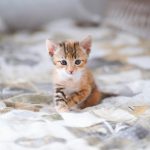Do you ever wonder what makes calico cotton fabric so special? Look no further! In this article, we will explore the history, characteristics, and uses of calico cotton fabric.
You’ll learn how it’s made and discover the key differences between calico cotton and other fabrics. We’ll even provide you with some tips on how to care for your calico cotton garments.
Get ready to dive into the fascinating world of calico cotton fabric!
Table of Contents
History of Calico Cotton Fabric
Now let’s take a look at the history of calico cotton fabric.
Calico cotton fabric has a long and fascinating history, dating back to its production in India during the 11th century. The word ‘calico’ actually derives from the name of the Indian city, Calicut, where it was first produced.
Calico cotton fabric production quickly spread across Europe, becoming particularly popular in England during the 17th and 18th centuries. The fabric was prized for its durability and affordability, making it accessible to people from all walks of life. Calico cotton fabric became a staple in fashion, home decor, and even quilting.
During the Industrial Revolution, calico cotton fabric production saw a significant boost as mechanized looms and printing techniques were developed. This led to mass production and a wider availability of calico cotton fabric, further solidifying its popularity.
In more recent times, calico cotton fabric has continued to be a beloved choice for clothing, especially for its breathable and lightweight qualities. It is also commonly used in crafts and quilting projects due to its versatility and wide range of prints and colors.
Overall, the history of calico cotton fabric is one of innovation, accessibility, and enduring popularity.
Characteristics of Calico Cotton Fabric
At this moment, calico cotton fabric is known for being lightweight and breathable. It has become increasingly popular in the fashion industry due to its numerous benefits.
First and foremost, the lightweight nature of calico cotton makes it perfect for warm weather clothing. It allows air to circulate, keeping you cool and comfortable. Additionally, the breathability of calico cotton ensures that moisture is wicked away from the skin, preventing the build-up of sweat and odor. This makes calico cotton fabric ideal for activewear and undergarments.
Another advantage of calico cotton fabric is its durability. It can withstand frequent washing and still maintain its shape and color. This means that garments made from calico cotton will last longer, saving you money in the long run. Furthermore, calico cotton is hypoallergenic, making it suitable for those with sensitive skin or allergies. It is less likely to cause irritation or rashes, making it a popular choice for baby clothes and bedding.
Uses of Calico Cotton Fabric
Calico cotton fabric is a versatile material that can be used in a wide range of applications. Whether you’re looking to create fashionable clothing or add a touch of charm to your home decor, calico is a great choice.
Its soft texture and vibrant patterns make it ideal for creating stylish garments, while its durability and easy care make it perfect for upholstery, curtains, and other home accessories.
Versatile Fabric Applications
Calico cotton fabric can be used for a wide range of applications due to its versatility. Whether you’re into fashion or crafts, calico has got you covered. Here are some ways you can utilize this fabric:
-
Create trendy clothing pieces: Calico’s soft texture and colorful patterns make it perfect for crafting fashionable garments. From dresses to shirts, you can showcase your personal style with this versatile fabric.
-
Craft unique home decor: Add a touch of charm to your living space by using calico fabric to make pillows, curtains, or even tablecloths. The vibrant patterns will bring life to any room.
-
Design accessories: Make statement accessories like tote bags, headbands, or even cute scrunchies. Calico’s durability ensures that your creations will withstand everyday use.
-
Embark on creative art projects: Calico is a popular choice for painting or embroidery projects. Its smooth surface allows for intricate designs and vibrant colors.
Calico for Clothing
One of the benefits of using calico for clothing is its soft texture and vibrant patterns. Calico patterns are known for their eye-catching designs, which can range from floral prints to geometric shapes.
Calico fabric is lightweight and breathable, making it ideal for warm weather garments such as dresses, blouses, and skirts. Its softness adds comfort to the wearer, allowing for easy movement throughout the day.
Calico has also become popular in the fashion industry due to its versatility. Designers have incorporated calico into their collections, creating unique and trendy pieces that stand out in the crowd.
Whether you’re looking for a statement piece or a casual everyday outfit, calico can add a touch of style and personality to your wardrobe.
Calico in Home Decor
If you’re looking to add a pop of color and pattern to your home decor, calico can be a great choice.
Calico, known for its vibrant and intricate designs, is not only popular in fashion and quilting but also in home decor.
With its bold prints and durable nature, calico fabric can be used to create stunning curtains, throw pillows, table runners, and even upholstery.
Its versatility allows you to mix and match different patterns and colors to create a unique and lively atmosphere in your living space.
Whether you prefer a traditional or modern aesthetic, calico can bring a touch of charm and personality to any room.
How Calico Cotton Fabric Is Made
To understand how calico cotton fabric is made, you can start by learning about the intricate weaving process.
Calico cotton fabric is a versatile and popular choice for clothing and home decor due to its durability, breathability, and softness.
The production process of calico cotton fabric involves several steps.
First, the cotton fibers are harvested from the cotton plant and undergo a cleaning process to remove any impurities.
Then, the fibers are spun into yarns, which are then woven together on a loom to create the fabric.
The weaving process is crucial as it determines the strength and quality of the fabric.
Once the fabric is woven, it goes through a finishing process, which involves treatments such as bleaching, dyeing, and printing to enhance its appearance and make it ready for use.
The benefits of using calico cotton fabric include its ability to withstand regular wear and tear, its breathability, and its hypoallergenic properties.
Additionally, calico cotton fabric is easy to care for and can be machine washed and dried without losing its shape or color.
Overall, the production process of calico cotton fabric ensures a high-quality and versatile fabric that can be used in a variety of applications.
Differences Between Calico Cotton and Other Fabrics
When it comes to comparing calico with synthetic fabrics, linen, and denim, there are some key differences to consider.
Synthetic fabrics, such as polyester, are man-made and often have a more durable and wrinkle-resistant quality compared to calico.
On the other hand, linen fabric is known for its natural and breathable properties, making it a popular choice for warm weather clothing.
Lastly, denim fabric, commonly used for jeans, is known for its sturdy and durable nature, which sets it apart from the lighter-weight calico fabric.
Calico Vs. Synthetic Fabrics
Calico cotton fabric is a popular choice for those who prefer natural materials over synthetic fabrics. When comparing calico to silk, calico offers a more affordable option while still providing a soft and comfortable feel. Silk may be luxurious, but it can be delicate and require special care.
On the other hand, calico is durable and can withstand regular washing and wear. When comparing calico to wool, calico is a lighter and more breathable option, making it suitable for warmer climates. Wool, on the other hand, provides warmth and insulation, making it a better choice for colder climates.
Ultimately, the choice between calico and synthetic fabrics depends on personal preference and the specific needs of the individual.
Calico Vs. Linen
Linen offers a lightweight and breathable alternative to calico.
When comparing calico to silk, calico provides a more affordable option while still offering durability. Silk, on the other hand, is known for its luxurious feel and delicate nature, making it suitable for special occasions rather than everyday wear.
When comparing calico to wool, calico is a more versatile fabric that can be used for various purposes, including clothing and home decor. Wool, on the other hand, is known for its warmth and insulation properties, making it ideal for winter garments and cold climates.
Ultimately, the choice between calico and these fabrics depends on your specific needs and preferences. Consider factors such as comfort, durability, and style when making your decision.
Calico Vs. Denim
Now that you know the differences between calico and linen, let’s explore how calico compares to denim.
Both fabrics have their own unique characteristics that make them suitable for different purposes. Here are the key differences between calico and denim:
-
Durability: Denim is known for its exceptional strength and durability, making it ideal for sturdy garments like jeans. Calico, on the other hand, is lightweight and less durable.
-
Texture: Denim has a characteristic diagonal weave, giving it a rough and sturdy texture. Calico, on the other hand, has a smooth and soft texture.
-
Versatility: While denim is primarily used for making jeans, calico is versatile and often used for making quilts, home decor items, and lightweight clothing.
-
Breathability: Calico is a breathable fabric, allowing air to flow through and keeping you cool. Denim, on the other hand, is not as breathable.
-
Price: Denim tends to be more expensive than calico due to its durability and popularity.
Now that we’ve compared calico to linen and denim, let’s dive into the differences between calico and silk, as well as calico and wool.
Tips for Caring for Calico Cotton Fabric
To keep your calico cotton fabric in good condition, make sure to follow these tips for caring.
Calico cotton fabric is known for its durability and versatility, making it a popular choice for various projects. One of the advantages of calico cotton fabric is that it is easy to care for.
When it comes to washing, it is best to use cold water and a gentle cycle to avoid any damage to the fabric. It is also recommended to use a mild detergent, as harsh chemicals can weaken the fibers over time. Additionally, it is important to avoid using bleach or fabric softeners, as they can cause discoloration and reduce the fabric’s absorbency.
When drying, air drying is the preferred method to prevent shrinkage and maintain the fabric’s shape. Ironing should be done on a low setting to avoid scorching or melting the fabric.
While calico cotton fabric is durable, it does have some disadvantages. It is prone to wrinkling, so it may require some extra care to keep it looking smooth and neat. Additionally, calico cotton fabric can fade over time, especially when exposed to direct sunlight. To minimize fading, it is advisable to store the fabric in a cool, dark place when not in use.
Conclusion
In conclusion, calico cotton fabric is a versatile and durable material that has a rich history and numerous uses. Its characteristics, such as its breathable nature and vibrant patterns, make it a popular choice for clothing, home décor, and crafting projects.
Understanding how calico cotton fabric is made and how to care for it properly can help you make the most of this beautiful fabric. So next time you come across calico cotton, remember its unique qualities and the craftsmanship that goes into creating it.
- Recycling Nonwoven Fabrics: Is It Possible? - July 11, 2025
- Recycling Nonwoven Fabrics: Is It Possible? - July 11, 2025
- Recycling Nonwoven Fabrics: Is It Possible? - July 11, 2025






